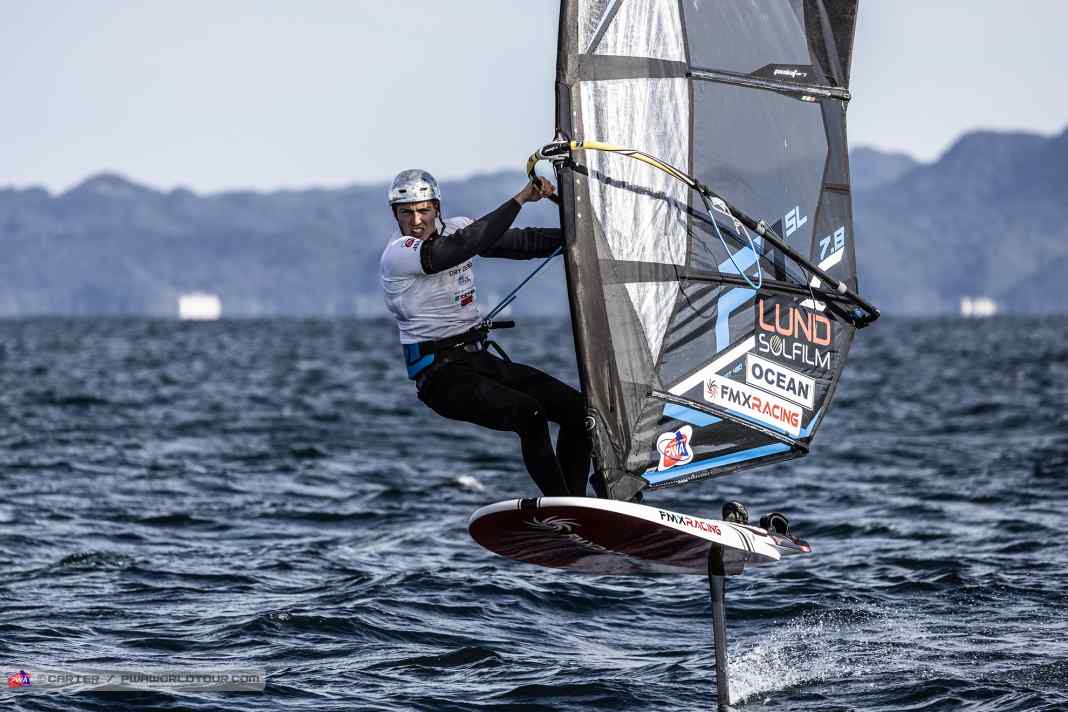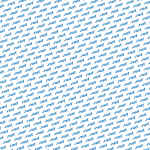Disqualification: What the PWA, Point-7, Johan Søe and Matteo Iachino have to say about the sailing drama in Japan






On Tuesday morning, Johan Søe was almost certainly the new slalom world champion, but shortly afterwards the 20-year-old Dane was disqualified. During a measurement of the sails on the windless last day of the regatta, it was discovered that the 7.8 had significant deviations from the series and had therefore violated the PWA rules. There was wild discussion on social media, and now the PWA has issued a detailed official statement explaining what happened.
Statement from the PWA:
"The PWA is an association run by drivers and manufacturers. The rules are set by the PWA Board, which is elected by the industry and driver members of the association. The driver and industry representatives on the PWA Board consult with members on all matters, including competition rules.
All PWA races are held with registered series material. The sails, boards and foils must therefore be registered by the manufacturers before the start of the season. All participating brands and riders are aware of these requirements.
This is to ensure that all participants have access to the same equipment and that any advantage resulting from greater financial resources is minimised in order to create as level a playing field as possible. It also creates an environment in which recreational surfers can obtain and use the same high-performance equipment as the professionals.
Three boards and six sails were registered
For 2023, participants have registered the 3 boards, 6 sails and a set of foil components they will compete with throughout the year at the first race they enter.
It is the responsibility of the participants themselves to ensure that their equipment does not violate the rules."
Not all equipment is checked at the events as this is expensive and time consuming, but riders are expected to abide by the rules and it is the responsibility of the participants themselves to ensure that their equipment does not break the rules. If in doubt, they can ask for their equipment to be measured to check that it is legal. Equipment will be randomly checked by several brands and riders at the events to ensure compliance with the rules.
How the PWA checks the sails
As part of the equipment checks at the PWA slalom final in Japan, the sails of top riders were also checked for compliance with the rules. Examples of sails from NeilPryde, Challenger, Severne and Point 7 were collected from the riders.
All collected sails were measured with the battens and cambers removed and the sails pulled flat on the ground on a flat, hard surface.
This was changed on Johan Søe's sail
Inspection of DEN-37's Point 7 sail revealed clear and indisputable evidence that the sail had been modified from its original factory construction. Traces of the original construction, such as glue and seam holes, were clearly visible, and the normal graphics printed on the sail were obscured where the batten pockets had been moved. Neither Point 7 nor DEN-37 disputed or questioned this fact.
In the case of the Point 7 sail, it was found that the leech dimensions between the battens deviated by more than 2 cm from the registered specification and were still 1.5 cm outside the registered specification even when the production tolerances of 0.35 % were applied.
To ensure fairness, a control sail from another rider using the same Point-7 series sails was also analysed. This sail showed no signs of modification like DEN-37's sail, there was no glue or altered seams and the graphics that were covered on DEN-37's sail were fully visible. All dimensions of the sail were within the permitted tolerances.
To ensure that all reasonable doubt was removed, the dimensions of the other production sail were used as the base measurement and the tolerances applied, but DEN-37's sail still showed a deviation of more than 1.5 cm, even with the additional millimetres allowed by the deviations of the second production sail.
The judges then convened a hearing with DEN-37 to ask him if he could provide any information as to why his sail had been altered, why it was outside the tolerance of the registered specification, and to give him the opportunity to explain the situation from his perspective and to put forward any mitigating circumstances that might justify the deviations found during the inspection.
Søe used the offending sail throughout the season
The sail had been registered by DEN-37 for the competition and therefore had to meet the correct specifications whether it had been used or not, but it was found to have been used throughout the year, including in Japan.
After hearing the evidence from DEN-37 and equipped with the results of the inspections, the Jugdes reconvened to discuss the situation and decide whether there was a violation of the rules and, if so, what penalty, if any, should be imposed.
The judges were unanimous that the sail - applying all tolerances and reasonable doubt - did not meet the required specification and was therefore illegal for use in PWA regattas. The committee found that although DEN-37 had not used the sail in a scored heat in Japan, he had used it in valid starts where he could not have known that the race would subsequently be abandoned, so this argument was not a valid defence. The committee also considered that, although he had no measurements from other events, he had used the sail in its current condition throughout the season, so whether or not he had used it in Japan was not the sole issue.
What the PWA rules say
The judges therefore felt compelled to apply the rules that state:
{2.5.3} Checking the equipment (SLALOM)
- (a) Equipment checks will be carried out by either a PWA representative or a member of the PWA Race Crew. A driver must make his equipment available for inspection at any time during the event. Failure to present equipment for inspection may result in disqualification from the race or the event.
- (b) The equipment used by the riders must conform to all registered specifications and must not have been modified in any way without prior authorisation from the protest committee. Modifications from the normal specification supplied by the manufacturer are not permitted. For the purposes of this rule, the addition of extra eyelets to the luff or clew, piercing of the sail to allow for trim options other than those supplied as standard, or any other attachment or modification intended to alter the shape or performance of the sail from the configuration supplied as standard is not permitted. For the avoidance of doubt, the protest committee may use the specifications of brochures, websites or the majority of specifications of other identical equipment as evidence of the specifications supplied as standard.
- (c) Batten types and tensions, mast types and tensions, camber adjustment, including sanding/filing and the addition of spacers or other optional devices supplied as standard for batten, mast or camber adjustment are exempt from this rule and may be adjusted at the discretion of the yachtsman concerned.
- (d) Any sailor found to be using equipment that is not registered or equipment that does not meet the registered specifications for that particular piece of equipment, including the above conditions, will be disqualified from the entire race discipline for that event.
The committee therefore had no choice but to disqualify DEN-37 from the event in Japan.
Place Søe or Point-7 still appeal?
As with any decision by the judges at an event, DEN-37 has the right to appeal the decision, and the hearing can be reopened if significant new evidence can be presented. DEN-37 has indicated that he intends to appeal, although no appeal has been filed at this time, and as DEN-37 is currently travelling home, he will be given further time to file an appeal should he choose to do so.
The PWA takes the application of the equipment registration rules very seriously, and competitors or brands that break these rules do so with great respect for the vast majority of their contemporaries who endeavour to comply with the rules."
Text: PWA
This is what Point-7 says about the modified sail from Johan Søe
Point-7: "It was not the first time that our brand has been at the top of the PWA podium and certainly not the last. We have proven it in various disciplines and often with new young talent. We are very competitive and work hard on our development. Johan has already signed with us for 2024 and we are even more motivated to bring him back to the top as he has shown outstanding performances. We are pleased to be able to support the PWA in the task of enforcing the control of riders' equipment at all events."
What Johan Søe says
In the meantime, Johan Soe has issued a new, detailed statement. He writes in it that the PWA had asked him for a statement, but then published its own statement without his view. Regarding the changes to his sail, Soe shouts: "The PWA also measured a P7 7.8 of a Japanese rider. This sail was also quite far away from the Point-7 registered specifications and my sail was unfortunately a bit further away. This means that the sail of the Japanese rider was already far away from the registered specifications. I'm sure Point-7 will be able to explain the technical details. The sail was NOT used for a valid race for PWA Japan. I raced with it once, but the race was cancelled due to too little wind. Therefore the sail had no influence on the result. It's sad to hear from riders that I used it in a valid race in Japan."
The 20-year-old, who thought he had already secured his first world title, continued: "The experience in Japan was very tough because I feel I was done a great injustice. I am sure that the PWA will start to measure the equipment more frequently during the events, with a stricter system and labelling of the parts that can be used, and not at the request of the rider on the last day of the regatta."
On Tuesday, shortly after his disqualification, the Dane expressed his gratitude for the great support and reported that he had not been able to train optimally this season due to his graduation. "Even though I appreciate the work of the PWA in making sure the rules are followed, I'm not sure if the decision made towards me was the right one as I never used the sail in Japan," Søe wrote.
At this point, you will find external content that complements the article. You can display and hide it with a click.
What world champion Matteo Iachino says
The beneficiary of the disqualification was Matteo Iachino, who won his second world championship title after 2016. The Italian released a video statement this morning in which he also commented on the allegations, the reviews and his role in them. Some comments on social media had suggested that Iachino or his sponsors were behind the scrutiny. Iachino emphasises that there are no official protests at the PWA and that the sails of all five top riders were measured at random. According to Iachino, the deviation of two centimetres is significantly more than the adjustments that are made during the further development of the sails.
At this point, you will find external content that complements the article. You can display and hide it with a click.

